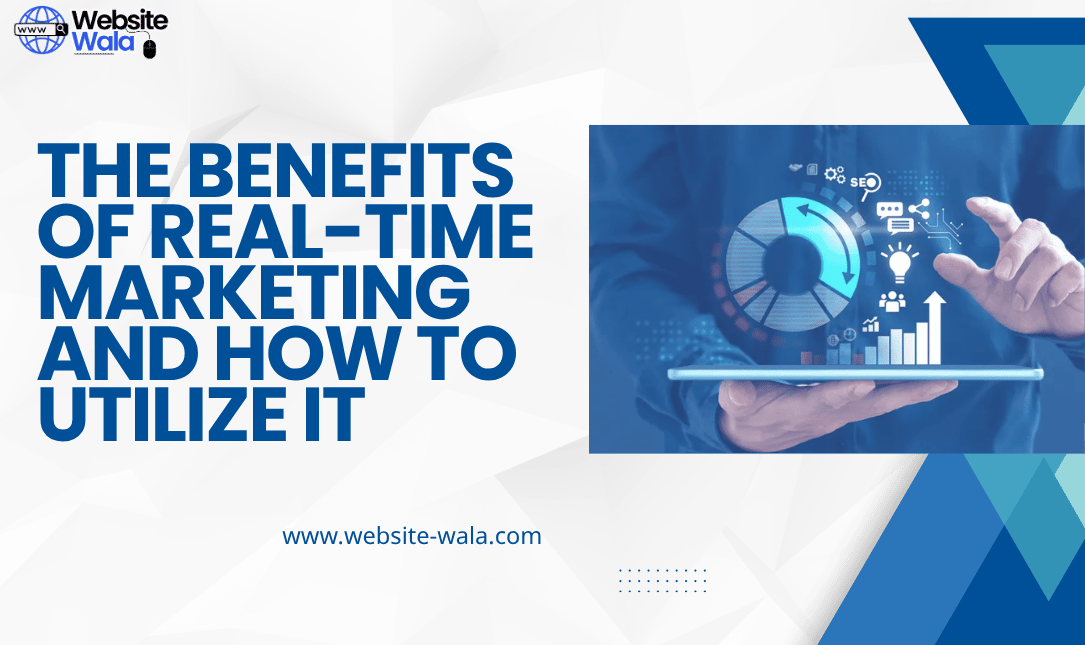
Discover the Benefits of Real-Time Marketing and How to Utilize It to boost engagement, instant connection, and real-time brand awareness effectively.
Introduction
In today’s fast-paced digital landscape, brands must act quickly to stay relevant. This is where real-time marketing comes into play. Understanding The Benefits of Real-Time Marketing and How to Utilize It can transform your marketing approach, allowing brands to connect instantly with their audience. By leveraging real-time data, businesses can craft campaigns that resonate immediately, driving engagement, awareness, and conversions.
What is Real-Time Marketing?
Real-time marketing is the strategy of responding promptly to trends, news, or audience interactions to deliver timely and relevant messages. Unlike traditional marketing, which relies on pre-planned campaigns, real-time strategies enable brands to be flexible, agile, and responsive. Through real-time technology, businesses can monitor real-time trends, track audience engagement, and execute campaigns that capitalize on current events or viral moments.
The Core Benefits of Real-Time Marketing
The benefits of real-time marketing extend beyond simple engagement metrics. Here are the primary advantages:
-
Enhanced Audience Engagement
By reacting quickly to trending topics or audience behaviors, brands can foster audience interaction and boost real-time engagement. This instant connection makes your audience feel heard, valued, and more likely to engage with your content. -
Increased Brand Awareness
Timely campaigns allow brands to gain real-time brand awareness by staying visible during peak engagement moments. When executed properly, real-time social media campaigns can make a brand a part of the conversation almost instantly. -
Improved Customer Insights
Utilizing real-time analytics provides valuable real-time customer insights. This allows marketers to understand what content resonates, which products gain interest, and how audiences interact with your messaging. -
Higher Conversion Rates
With real-time personalization, brands can deliver offers, recommendations, or messages tailored to individual preferences. This targeted approach enhances audience targeting and improves the likelihood of conversions. -
Enhanced Customer Service
Real-time communication allows companies to respond promptly to customer queries or complaints, improving satisfaction and loyalty. Real-time customer service helps brands stay proactive rather than reactive.
Key Real-Time Marketing Strategies
Understanding The Benefits of Real-Time Marketing and How to Utilize It is only the first step. Implementing effective real-time strategies is crucial for success.
-
Monitor Real-Time Trends
Stay updated with current events, trending hashtags, and viral content. Using real-time analytics tools can help identify opportunities for timely engagement. -
Leverage Social Media
Real-time social media is one of the most powerful tools for real-time campaigns. Platforms like Twitter, Instagram, and TikTok allow brands to post timely content that encourages audience interaction and real-time engagement. -
Implement Real-Time Content Marketing
Develop content that is flexible enough to adapt to current events. Real-time content marketing ensures your brand remains relevant, visible, and connected to your audience. -
Use Real-Time Advertising
Paid real-time advertising campaigns can target users based on behavior, location, and preferences. This enables real-time responsiveness and helps maximize ROI. -
Encourage Real-Time Feedback
Soliciting real-time feedback during campaigns allows brands to make immediate adjustments. This not only improves audience engagement but also strengthens brand trust. -
Integrate Real-Time Messaging
Real-time messaging through chatbots, apps, or social media platforms ensures your audience receives timely responses and personalized experiences.
Tools and Technologies for Real-Time Marketing
To fully capitalize on The Benefits of Real-Time Marketing and How to Utilize It, brands need real-time technology. Some essential tools include:
-
Social listening platforms: Monitor mentions, trends, and sentiment.
-
Real-time analytics dashboards: Track engagement, clicks, and conversions as they happen.
-
Marketing automation tools: Enable real-time personalization and real-time campaigns.
-
CRM systems with live updates: Support real-time customer service and audience targeting.
Investing in the right tools ensures your brand can respond with speed and accuracy.
Measuring the Advantages
Tracking the effectiveness of real-time marketing is crucial. Metrics to monitor include:
-
Engagement rates: Likes, shares, comments, and clicks indicate audience interest.
-
Conversion rates: Assess whether real-time efforts lead to sales or subscriptions.
-
Customer satisfaction: Real-time feedback and real-time customer service can highlight strengths and areas for improvement.
-
Brand visibility: Monitor real-time brand awareness and mentions across platforms.
Regular measurement allows brands to refine real-time strategies and improve overall campaign effectiveness.
Real-World Examples
Several brands have leveraged The Benefits of Real-Time Marketing and How to Utilize It successfully:
-
Oreo: Their timely tweet during a major blackout event became an iconic example of real-time engagement.
-
Nike: Through real-time social media campaigns, Nike capitalized on trending topics to boost audience interaction.
-
Amazon: Uses real-time analytics to offer personalized product recommendations, enhancing real-time personalization and driving sales.
These examples showcase the power of real-time responsiveness and real-time campaigns when executed effectively.
Tips for Maximizing Real-Time Marketing
To make the most of The Benefits of Real-Time Marketing and How to Utilize It, consider the following tips:
-
Be Prepared: Have a dedicated team for real-time communication and monitoring trends.
-
Stay Authentic: Real-time content should reflect your brand voice and values.
-
Act Quickly: Timing is critical—delayed responses can reduce real-time engagement.
-
Leverage Data: Use real-time data to inform messaging and audience targeting.
-
Test and Iterate: Continuously refine real-time strategies based on performance metrics.
Conclusion
Understanding The Benefits of Real-Time Marketing and How to Utilize It is essential for any modern brand looking to engage effectively with its audience. By leveraging real-time technology, monitoring real-time trends, and implementing real-time campaigns, brands can create meaningful audience interactions, improve real-time brand awareness, and boost conversions. The agility and responsiveness offered by real-time marketing not only enhance audience engagement but also foster lasting customer loyalty.
Investing in real-time analytics, social listening, and real-time content marketing allows brands to stay ahead of the competition while maintaining a strong, instant connection with their audience. Real-time marketing isn’t just a trend—it’s a strategic advantage that can transform how businesses communicate, engage, and grow in the digital age.























